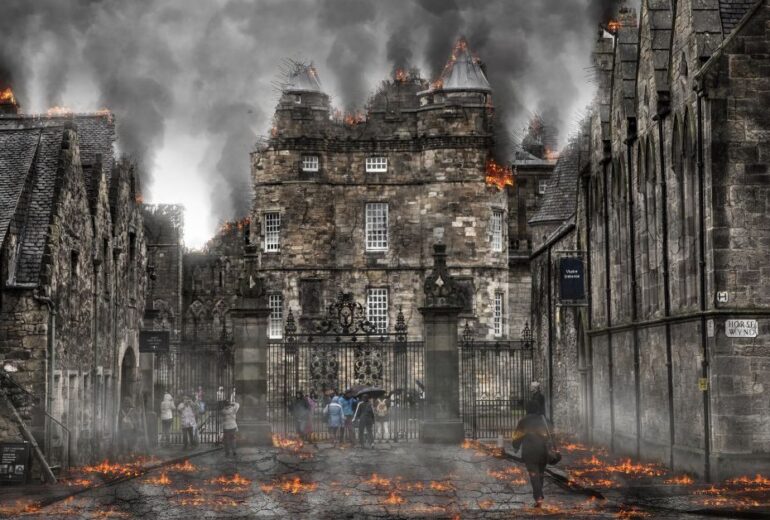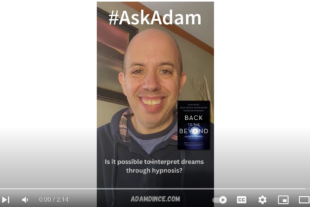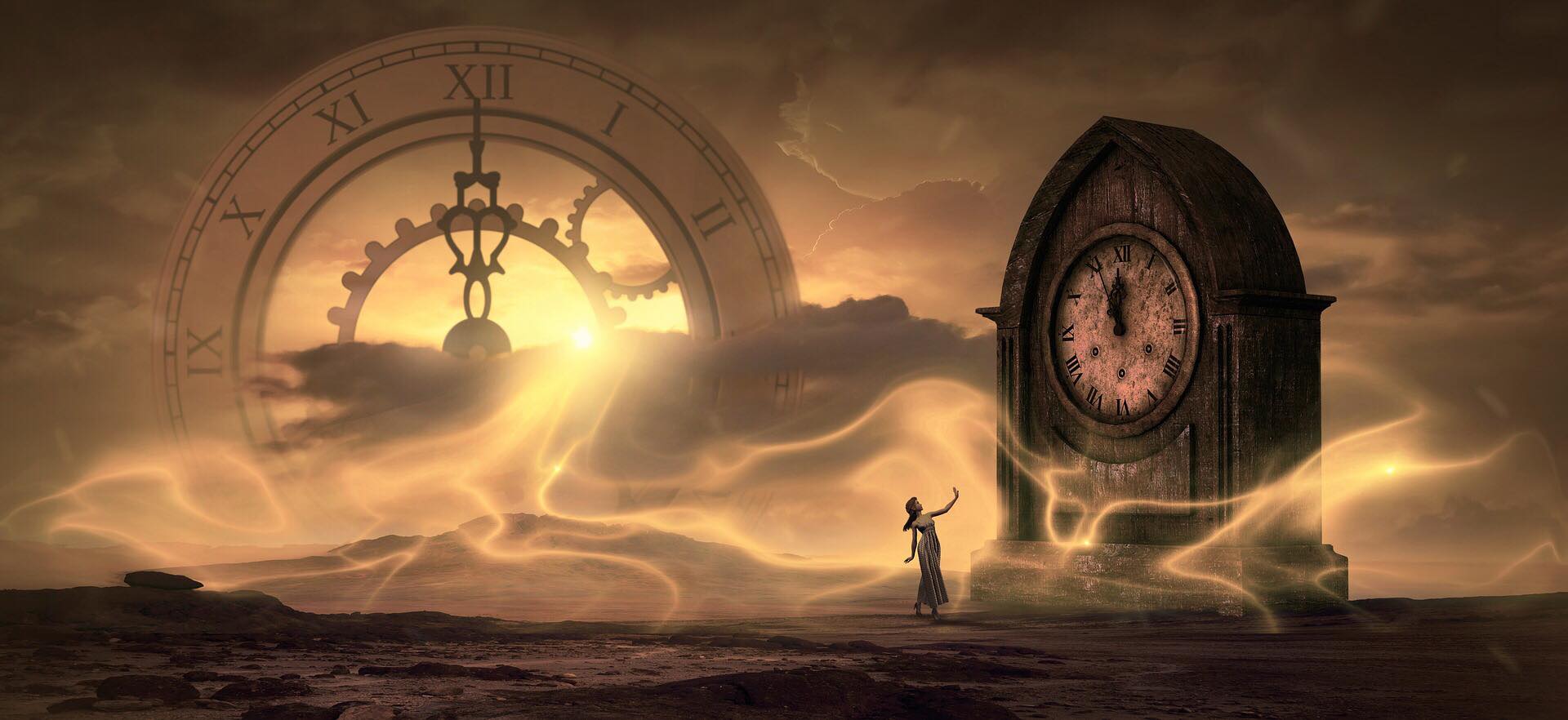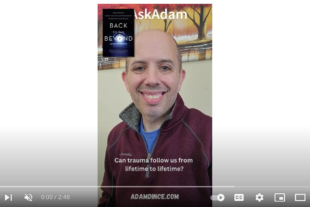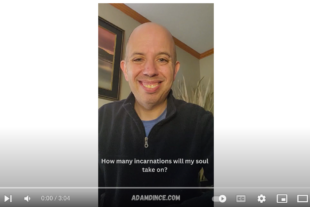Hi, I’m hypnotherapist, Adam Dince, and I specialize in working with people who have had near-death experiences (NDEs). More specifically, I help near-death experiencers integrate their experiences through the power of hypnotic regression. Recently, I met a friend who was concerned about NDE accounts where people had a “hellish” or traumatic experience. And she wanted to know if hell in the afterlife was real. That said, this is a question that many grapple with.
Do I believe that hell exists in the afterlife?
No, I don’t believe that there is a hell in the afterlife. I believe that when our physical body dies, we all go Home. Home to where we came from before we were birthed into our physical body. To the most beautiful “place”, if “place” is the right word. We go back to being love, connection, and our purest Essence.
Why don’t I believe in hell?
Let’s first start with a bit of research. In a survey conducted by the Near-Death Experience Research Foundation (NDERF), the responses to the nature of the near-death experience were divided as follows: 64.3% described their experiences as wonderful, 32.1% as mixed, and only 3.6% as frightening. It is estimated that less than two percent of all NDEs shared with NDERF have hellish content. This suggests that while distressing NDEs, including those with hellish imagery, do occur, they represent a relatively small percentage of all NDEs.
According to Statista, a global data and business intelligence platform that provides statistics, reports, and insights, the two major religions that believe in a traditional hellish experience represent about 57% of the world’s population.
Now, if we take the world’s population at 100% and subtract the 57% of the population who believe in hell, that leaves 43% of us who do not subscribe to that belief system. And most of the people who believe in hell, believe that you go there if you do not hold the same spiritual beliefs that they do. So, if 43% of the population should theoretically go to hell, but hellish NDE accounts represent less than 2% of the total population, we find ourselves with a huge unexplainable gap.
Of course, in my opinion, it’s not that unexplainable, because as I mentioned earlier, I do not believe that hell exists. I hold this opinion based on publicly available documentation of “heavenly” NDE accounts, plus my own hypnotherapy work with NDERs who do not subscribe to any specific religion or religious belief systems.
Here are two examples of atheists who had positive near-death experiences:
Jose Hernandez, an engineer and self-proclaimed “true Atheist.”
Jose had a life-changing near-death experience. He recounted watching his own body receive CPR and had a spiritual encounter with a shadowy figure during his NDE. Hernandez described a sense of peace, love, and calm, as well as being lifted to a corner of the room where he observed medical efforts to save his life. He reported hearing a voice speaking to him about life and death, and later, he claimed to have reunited with his late father in what he believed to be heaven.
Colleen, who had a “heavenly” NDE
“The vision I had was AMAZING, but it was more than a vision, it was a whole-body experience, kind of like taking mushrooms but better. I was floating/slowly flying through a huge very blue limitless sky with white puffy clouds. There was an overwhelming feeling of love, warmth, happiness, peace and that all things are always going to be good forever. So much so that I felt almost a physical swelling in the chest, like it can’t be contained. There was the sound of the wind passing by my ears, and I could feel it on my body, although I never looked to see if I had a body or clothes or whatever. There was distant singing of one female voice that I couldn’t make out the words. It was beautiful. I began to make out the voice; it was my name, way off in the distance in a lovely singsong tone, “Colleeeen.” And again, louder and a little closer. And again louder.”
What then are hellish near-death experiences?
I believe that hellish NDEs can be a byproduct of messages we need to hear from the other side as well as the conditioning we’ve experienced in this lifetime.
Regardless, I believe that near-death experiences give people the experience(s) that serves their highest and greatest good.
And sometimes what serves the greatest good is a scary/hellish experience. Sometimes, the darkness is our greatest teacher and I believe that Entheogenic medicine accounts back my theory up.
What can entheogens/psychedelics teach us about hellish near-death experiences?
It’s common for people who use entheogenic medicines (psychedelics) like psilocybin, to report negative, difficult, or dark “trips”. The concept of “bad trips” during psychedelic experiences, often characterized by intense and distressing emotions or visions, can be interpreted by some as profound messages urging personal change or growth.
Rather than being mere negative reactions, these challenging experiences can serve as catalysts for deep introspection and transformation. Users often report confronting their deepest fears, unresolved conflicts, or repressed emotions during these episodes, which can be interpreted as the mind’s way of bringing critical issues to the forefront of consciousness. This perspective views the discomfort and distress of a bad trip not as an adverse side effect but as a meaningful part of a psychological and spiritual journey, pushing individuals towards necessary life changes or realizations.
It’s a process akin to mental and emotional detoxification, where confronting and working through the difficult aspects of one’s psyche leads to a stronger, more self-aware state of being. Consequently, these challenging psychedelic experiences are sometimes valued as much as the more pleasant ones, as they are seen as opportunities for significant personal development and profound insight into one’s life.
Similarly, I believe that, with negative or hellish NDEs, if one looks past the surface of the experience, there’s often a message or a lesson that can be gained. Additionally, many who experienced hell in their NDE also shared that it evolved into a positive experience as the NDE progressed.
How can you believe that “heavenly” NDEs are real when you believe that hellish NDEs are the mind’s way of bringing critical issues to the forefront of consciousness?
Simple–I believe both experiences come from the same place. When in the right state, our minds can act as receivers that tune into messages from the Beyond. And, during a near-death experience, hypnotic regression, psychedelic journey, deep meditation, etc., we can tap into the frequency of the dimensions and realms that we can’t normally access with our egoic mind. And when our brains tune into these frequencies, we open up to receive powerful sensory messages, lessons, and experiences that serve our highest and greatest good. In other words, many psychedelic journeys and near-death experiences are not figments of our imagination. Rather, they’re actual explorations of dimensions and realms outside of our normal frequency; just like dogs can hear sounds and see colors that humans can’t. And these realms have so many messages to share with us.
We don’t lose our human conditioning the moment we leave our body
Most psychic mediums who communicate with those who have crossed over will tell you that we don’t immediately lose our personalities and belief systems when the soul leaves the body. This perspective is also discussed in one of my favorite books.
“Seth Speaks: The Eternal Validity of the Soul” is a book written by Jane Roberts, who channeled a personality named Seth. In this work, Seth offers a perspective on the nature of the soul, reality, and consciousness, including what happens after death.
According to Seth, our beliefs and conditioning from physical life significantly influence our initial experiences after death. He suggests that immediately after death, individuals often find themselves in environments that are familiar and comfortable, shaped by their expectations, beliefs, and conditioning from their physical life. This means that if a person strongly believes in a particular version of the afterlife, they may initially experience something similar to that belief.
Seth explains that this period after death is a time of transition and learning. The soul gradually realizes the greater flexibility and creativity it has outside of the physical body, and it begins to understand that it can create and experience different realities. This realization allows the soul to move beyond the initial conditioning and explore more expansive, diverse states of consciousness.
However, Seth emphasizes that this process varies for each individual, depending on their beliefs, level of awareness, and willingness to let go of limiting concepts. The idea is that the soul eventually learns to transcend its earthly conditioning and embrace a broader understanding of its own nature and the nature of reality.
Of course, Seth wasn’t speaking about NDEs and near-death experiences are far shorter than what we actually experience when we die. So, in an NDE, not everyone makes it out of the initial belief system phase.
That said, for all the talk of hellish NDEs, the majority of NDErs (98% +) report, positive “heavenly” experiences.
The key is, integrating these experiences to ensure we embody what we’ve learned from the lessons and to heal any remaining traumas that these experiences caused. Whether a heavenly or hellish experience, it’s important to consider what the Universe is trying to show us.
In closing, as a hypnotherapist delving deep into the world of near-death experiences, my journey has led me to a profound realization: the nature of these experiences, be they blissful or harrowing, is deeply intertwined with our personal beliefs and life experiences. Hellish NDEs, while less common, serve as a crucial part of this exploration, offering us insights and lessons that are often veiled beneath their initially frightening appearances. It’s essential to view these experiences not as definitive statements about the afterlife, but as reflections of our innermost fears, hopes, and beliefs.
Through my work, I’ve come to understand that these extraordinary experiences, whether through NDEs or entheogenic journeys, are not mere hallucinations but meaningful explorations of realms beyond our ordinary consciousness. They are messages from beyond, urging us to look deeper within ourselves and embrace the lessons they bring. The key lies in integration, in understanding and accepting these experiences as part of our spiritual journey, and using them to foster personal growth and healing.
As we continue to explore and understand the mystery of near-death experiences, we must keep an open mind and heart. Whether you’ve had an NDE, know someone who has, or are simply curious about the afterlife, I invite you to join me in this exploration of the unknown, as we seek to understand the profound messages these experiences hold. Remember, in the realm of the beyond, there is much more to discover, and the journey is as significant as the destination itself. For a deeper dive into this fascinating topic, I encourage you to read my book, “Back to the Beyond: Exploring Near-Death Experiences Through Hypnosis”, where I share more insights and stories from those who have glimpsed beyond the veil.

